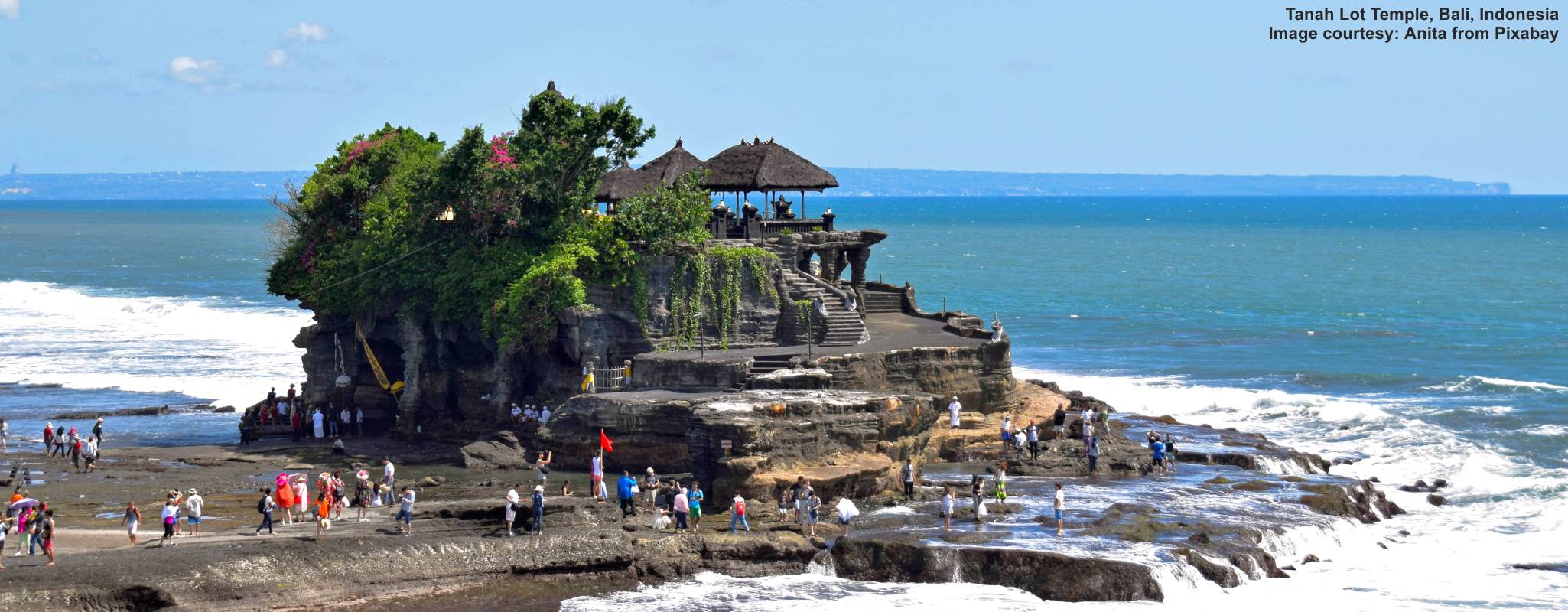




Bali climate & geography
Bali, with its tropical climate and stunning geography, offers a picturesque setting for tourists. The island is characterized by lush greenery, volcanic landscapes, and pristine beaches. The climate is warm and humid year-round, with two distinct seasons: the wet season from October to March, and the dry season from April to September. The island's diverse geography includes towering volcanoes such as Mount Agung and Mount Batur, which provide opportunities for hiking and breathtaking sunrise views. Bali's coastline is adorned with beautiful beaches, from the popular tourist hubs of Kuta and Seminyak to the serene shores of Nusa Dua and Sanur. The island is also known for its iconic rice terraces, particularly in Ubud, where visitors can witness the stunning beauty of the cascading green fields. The lush tropical vegetation, including palm trees and vibrant flowers, adds to the natural charm of the island. Bali's climate and geography combine to create a tropical paradise that beckons travelers to explore its natural wonders and indulge in its serene beauty.
Getting to and around Bali
Getting to Bali is convenient and accessible, with Ngurah Rai International Airport serving as the main gateway. Numerous airlines offer direct flights from major cities around the world. Once in Bali, transportation options are plentiful. Taxis and ride-hailing services are readily available, providing convenient transfers from the airport to your accommodation. Public transportation in Bali mainly consists of bemos (minivans) and buses, although they may not be as reliable or widely used by tourists. Many visitors prefer to rent a scooter or motorbike for flexibility and ease of exploring the island at their own pace. Alternatively, private drivers and tour operators offer transportation services for day trips and sightseeing excursions. Bali's road network is well-developed, making it relatively easy to navigate between popular tourist areas. It's worth noting that traffic can be congested, especially in more densely populated areas like Kuta and Seminyak. However, with a variety of transportation options available, getting to and around Bali is straightforward, allowing visitors to fully experience the island's rich cultural heritage, beautiful landscapes, and vibrant communities
5 facts about Bali
1. Island of Gods: Bali is often referred to as the "Island of the Gods" due to its rich cultural and spiritual heritage.
2. Terraced Rice Fields: The iconic terraced rice fields of Bali, known as "subak," are not only visually stunning but also a UNESCO World Heritage Site, highlighting the island's agricultural prowess.
3. Balinese Dance: Traditional Balinese dance performances are an intricate part of the culture, with dancers depicting mythical stories and legends through their movements and vibrant costumes.
4. Ubud's Cultural Hub: Ubud, in the heart of Bali, is a cultural hub renowned for its arts and crafts, yoga retreats, and lush landscapes that inspired the famous book and film "Eat Pray Love."
5. World-Class Surfing: Bali is a paradise for surfers, offering waves for all skill levels, with Uluwatu and Padang Padang being among the most famous surfing spots.
Last update August 2023










